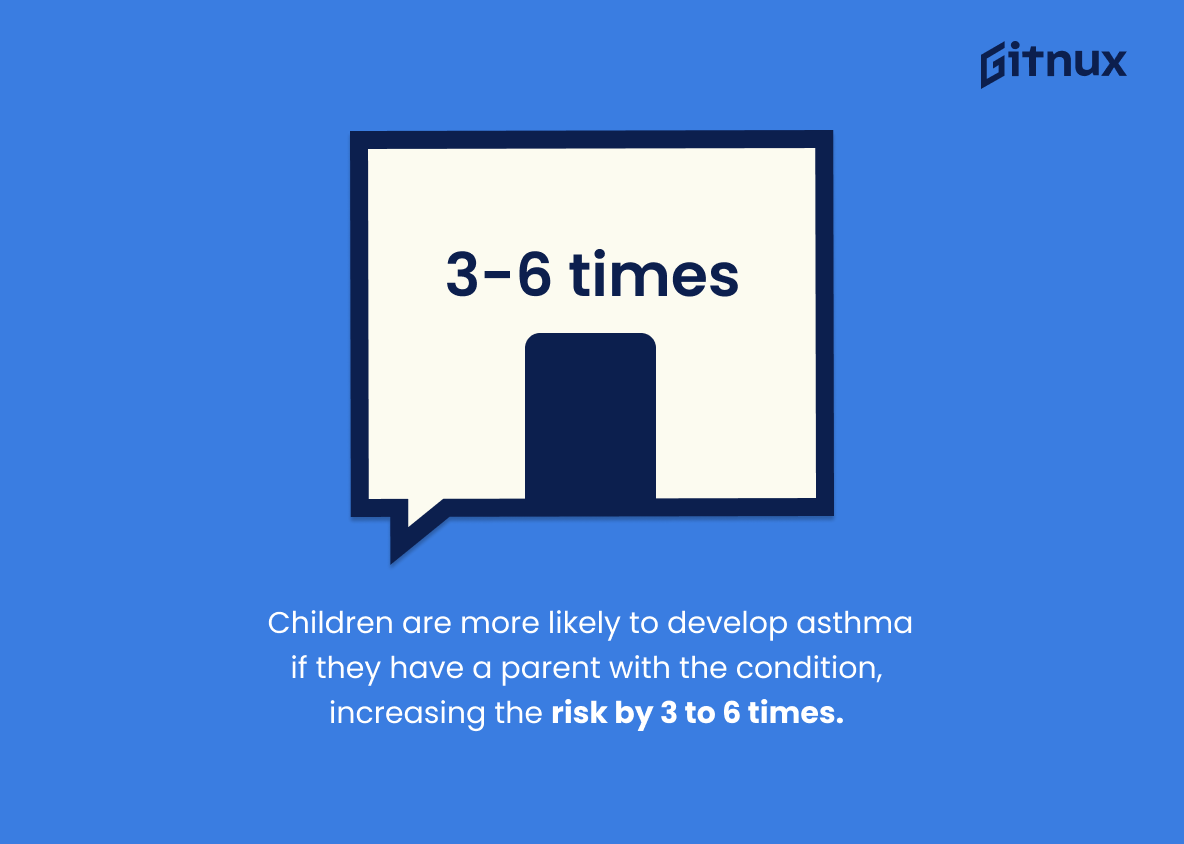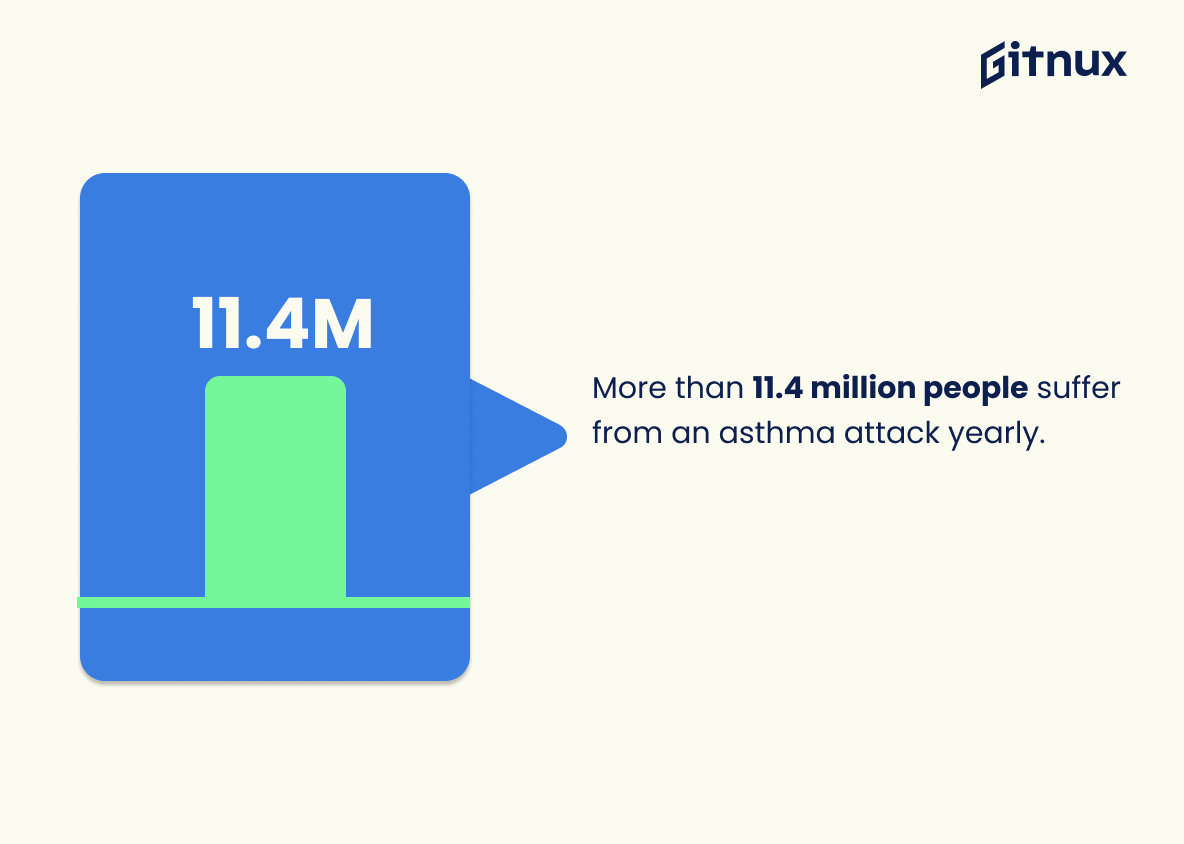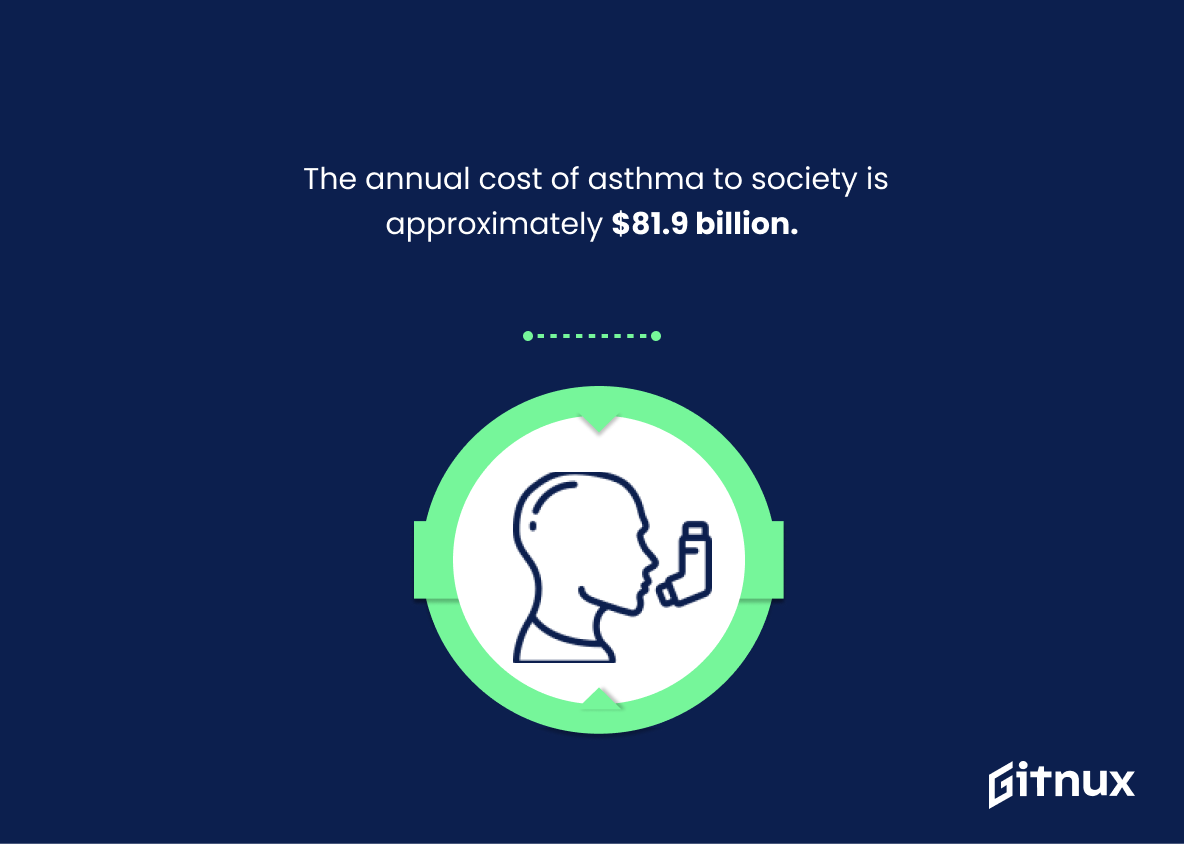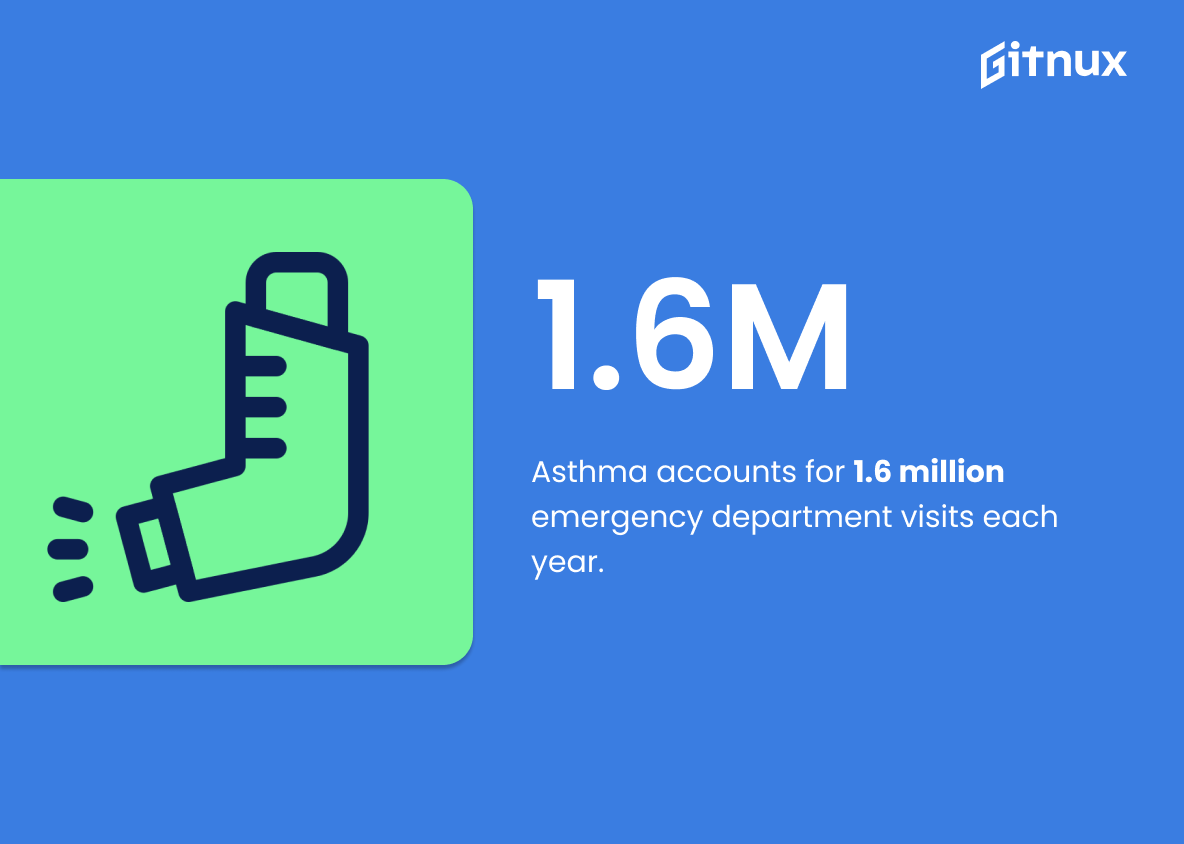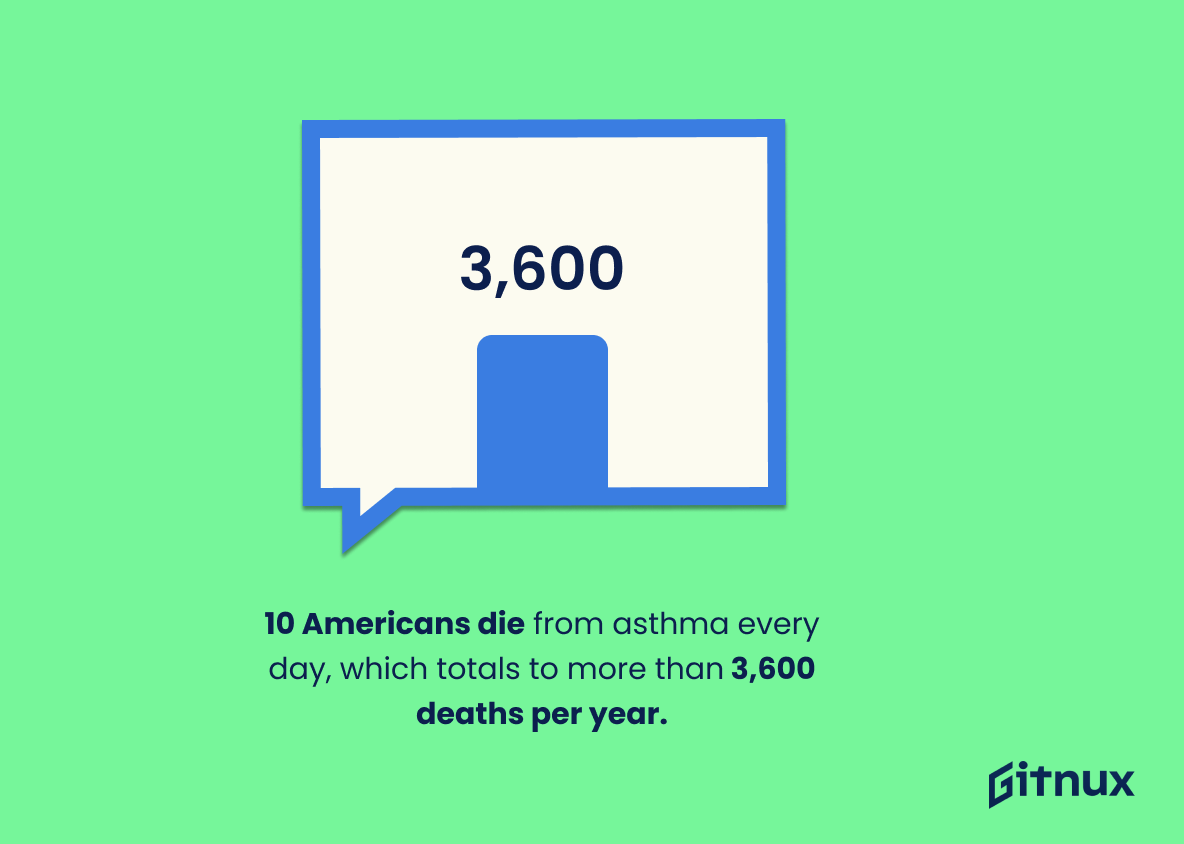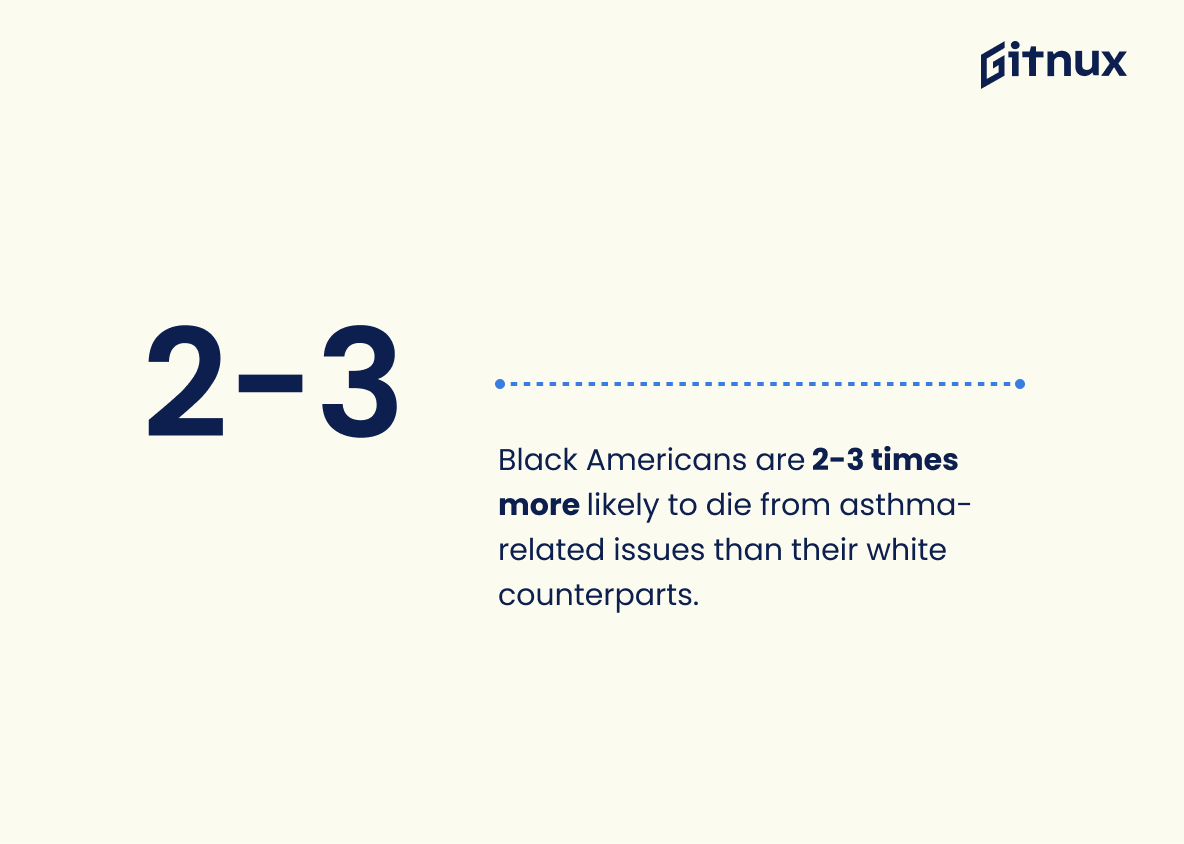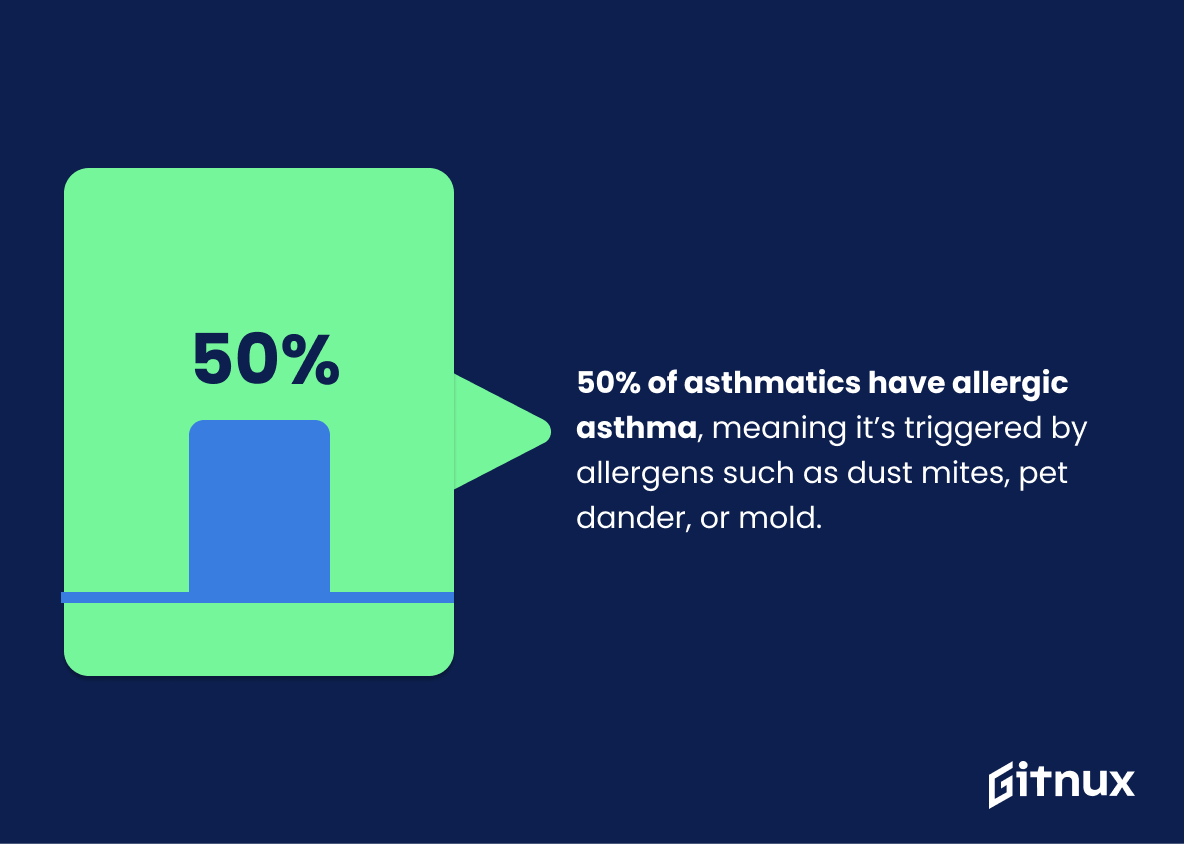Delving into the world of respiratory health, one cannot ignore the prominence and prevalence of asthma, an ailment affecting millions globally. As a chronic lung condition that inflames and narrows the airways, it punctuates normal life with harrowing episodes of breathlessness, wheezing, chest tightness, and coughing.
This blog post unfolds a comprehensive array of asthma statistics, illuminating new facets of the condition, from its global prevalence and mortality rates, to the intriguing links between asthma and factors like age, environment, and genetics. Understanding these stats is of enormous importance as they help to visualize the magnitude of the problem, underline the urgent need for research, intervention, smart policy-making, and offer incisive insights to everyone affected by or dealing with asthma.
The Latest Asthma Statistics Unveiled
About 1 in 13 people have asthma.
Highlighting that approximately 1 in 13 individuals grapple with asthma underscores the astonishing prevalence of this ailment, painting a vivid picture of a widespread health issue that many people might not comprehend its gravity. This numerical perspective informs the readers about the scale at which this respiratory condition impacts our societies, emphasizing the need for awareness, research, and improved healthcare initiatives. In essence, this statistic is a wake-up call to the gravity of asthma and the necessity to address it.
Children are more likely to develop asthma if they have a parent with the condition, increasing the risk by 3 to 6 times.
In the realm of blog posts weaving tales of Asthma statistics, there’s a stunning revelation demanding our attention. We are entangled in a genetic thread, where children inherit the mantle of Asthma from their parents, amplifying the risk by a staggering 3 to 6 times. This statistic, a whirling dervish in our data-driven narrative, unveils a story of complex lineage and stark disparity.
It draws a stark connection between the genes we inherit and the breaths we take, underscoring the urgency for preventive measures and genetic research. Above all, it provides powerful evidence for providing family-centered care and pushing advancements in medical research, with the aim of tailoring interventions to mitigate this increased risk.
Over 25 million Americans have asthma, which is roughly 8% of the population.
Broadcasting the reality that over 25 million Americans, a considerable 8% of the population, wrestle with asthma, this figure punctuates the narrative surrounding the breadth of asthma’s impact in the U.S within the blog post about Asthma Statistics.
This numerical revelation, undeniably, emphasizes the pervasive nature of this disease, underscoring the necessity for continuous research, improved treatments, and larger-scale awareness campaigns about asthma. It further serves as a grim testament of the situation’s severity, potentially inciting readers’ empathy and rallying support for those affected.
More than 11.4 million people suffer from an asthma attack yearly.
In a world teeming with information, numbers truly speak; take for instance, the staggering figure of over 11.4 million experiencing an asthma attack annually. This daunting figure is a wake up call to the magnitude and urgency of the asthma situation globally.
Each digit in this ominous statistic represents an individual gasping for breath, a poignant reminder of the pervasiveness of this condition. This striking number has the potential to ignite the reader’s concern, illuminating the scope of the problem and fostering a deeper understanding of why we should invest our attention, resources, and efforts towards asthma prevention and treatment strategies.
The annual cost of asthma to society (including direct medical costs and loss of work and school days) is approximately $81.9 billion.
Unpacking the hefty cost of annual asthma care, to the tune of $81.9 billion, draws attention to the significant burden this condition imposes on our society. This figure is astounding, painting a clear picture of the critical impact asthma has not only on our health, but also on our wallets, productivity, and overall quality of life.
By shedding light on the enormous expenditures required for medical treatments and the added blow of lost work and school days, we underscore the multifaceted toll of asthma and emphasize the need to address it urgently and strategically. Therefore, this staggering number serves as a call to action, prompting us to invest in prevention, innovation, and education in a bid to alleviate this horrid financial and societal burden.
Asthma accounts for 1.6 million emergency department visits each year.
Delving into the sprawling landscape of Asthma Statistics, the revelation of 1.6 million annual emergency department visits attributable to asthma strikes like a lightning bolt. These numbers are not simply digits on a page, but represent each labored breath and every agonizing inhalation faced by individuals grappling with this challenging condition.
Aside from painting an alarming picture of asthma’s prevalence, these figures underscore a dire need for broader awareness, improved management strategies, and more accessible treatment options. As such, these statistics are the silent scream that urges us to be more proactive in the fight against asthma – a battle fought in 1.6 million emergency rooms every year.
10 Americans die from asthma every day, which totals to more than 3,600 deaths per year.
Drawing upon this piece of data, the alarming illustration of the mortality rate from asthma – 10 American lives claimed daily – culminating in over 3,600 losses annually, serves as a profound wake-up call. It forces us to recognize the gravity of this chronic respiratory disease.
This statistic offers a stark reflection of the real and present danger asthma represents, making it a critical entry point for readers of an asthma statistics blog post. It simultaneously calls for proactive educational and preventive strategies, advocates for more research funds in its effective management, and reassures those affected that their struggle is recognized and not in vain.
Black Americans are 2-3 times more likely to die from asthma-related issues than their white counterparts.
Within the realm of Asthma Statistics, the notable disparity wherein Black Americans are 2-3 times more likely to perish from asthma-related complications compared to their white counterparts underscores an urgent need for comprehensive healthcare intervention and policy reform. The statistic sheds light on an unignorable chasm, not just in the distribution of a health condition, but in lifelines themselves. It highlights a tale of two different Americas, an inequality written in wheezing breaths and untimely departures, pushing towards a narrative that beckons change.
It reinforces the urgent need for a more inclusive, equitable healthcare system, paving the way for prevention strategies, education, and resources to be directed towards the Black American community. By doing so, it aims at mitigating such disparity, breathing hope into communities disproportionately affected by this health concern.
Approximately 50% of asthmatics have allergic asthma, meaning it’s triggered by allergens such as dust mites, pet dander, or mold.
Highlighting the fact that nearly half of all asthma patients suffer from allergic asthma directs our attention towards the significance of everyday allergens. This is like unveiling a critical determinant of our indoor environmental quality – dust mites, pet dander, and mold, which might otherwise be innocuously overlooked.
In a broader perspective, it underlines the vital need for regular allergy testing, modifying living conditions, advancing research in allergen management, and tailored treatment plans for allergic asthma patients. Thus, it empowers both sufferers and health professionals to comprehensively combat asthma, emphasizing the impact of our immediate living and working space on our health.
Conclusion
Understanding the statistics surrounding asthma is not just about numbers or figures – it’s about realizing the far-reaching and serious implications of this health issue that affect millions globally. As we continue to gather data and analyze trends, we can develop more effective treatments, interventions, and possibly preventative measures to help those suffering from this chronic condition.
Let us use these asthma statistics as our guide, our motivation, to strive harder in promoting respiratory health, increasing asthma awareness, and improving the quality of life of those afflicted with this life-long condition. These statistics serve as a call to action for healthcare professionals, policymakers, and even ordinary citizens to unite in the fight against asthma.
References
0. – https://www.www.aafa.org
1. – https://www.www.healthline.com
2. – https://www.www.aaaai.org
3. – https://www.www.cdc.gov
4. – https://www.www.lung.org
5. – https://www.www.ncbi.nlm.nih.gov
6. – https://www.asthma.net

